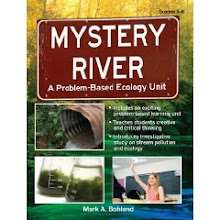A chicken and a pig were discussing the farmer’s favorite breakfast – ham and eggs. The chicken insisted that the farmer was great and wise in his choice of breakfasts, and that the rest of the community should follow his example. “That’s fine for you,” replied the pig. “in your case, breakfast is a donation; In mine, it’s a commitment.”
Teaching is like that. Meeting the needs of all students is not the result of donating, or “putting in” your time. Adding Value to your students’ school year is a commitment. Some days it may seem like you are giving it ALL – that you’re the pig and this is the end of you.
However, even though Adding Value to your students will always be a commitment, there are simple things that you can do to keep that commitment reasonable – something well to this side of the supreme sacrifice. I’ll be sharing some of those ideas – things you can use in your classroom right away, both to add value to your students’ school year and to make your life simpler and easier.
You can also share your successes. Tell me about the things you are already doing – either in a reply to this post or in a separate e-mail. I’ll post great ideas and give you the credit. With your permission, I’d like to include your ideas, with a credit to you, in Adding Value. More about that next time.
Monday, June 30, 2008
Tuesday, June 24, 2008
ADDING VALUE - The Purpose
The Audience
There are over 2.6 million public school teachers (grades K-8) in the United States. Many of them are experiencing job related stress, and much of that stress may be directly attributed to new accountability (value-added) standards. No longer can a teacher rest, knowing that, on average, her students are able meet some standard of proficiency for their grade level. In the past if a teacher had the standardized test scores of a few high ability students to balance those of a couple of low achievers, all was well. On average, the class was proficient.
The paradigm has changed.
Value-added assessment dictates that a teacher must add a year’s worth of academic growth, over the course of a school year, to each student. If Johnny enters 4th grade with the skills of a beginning 3rd grader, then he must leave that school year with (at least) the skills of a beginning 4th grader. On the other hand, if Maria, enters the same teacher’s 4th grade classroom with the skills of a beginning 5th grader, then she must leave that school year with (at least) the skills of a beginning 6th grader. Compounding that teacher’s task is the fact that Jasmine is “above grade level” in one subject, “at grade level” in another subject, and “below grade level” in two others. The teacher must add a year’s worth of academic growth, over the course of a school year to each student, in each subject area.
A Need
For many teachers, this is a recipe for stress, frustration, and an early exit from the teaching profession.
The Purpose
Adding Value offers simple, practical, proved strategies, and action steps that teachers can easily use to meet the varying needs of multiple groups of students, at the same time, in an efficient manner, and do so with less personal stress.
There are over 2.6 million public school teachers (grades K-8) in the United States. Many of them are experiencing job related stress, and much of that stress may be directly attributed to new accountability (value-added) standards. No longer can a teacher rest, knowing that, on average, her students are able meet some standard of proficiency for their grade level. In the past if a teacher had the standardized test scores of a few high ability students to balance those of a couple of low achievers, all was well. On average, the class was proficient.
The paradigm has changed.
Value-added assessment dictates that a teacher must add a year’s worth of academic growth, over the course of a school year, to each student. If Johnny enters 4th grade with the skills of a beginning 3rd grader, then he must leave that school year with (at least) the skills of a beginning 4th grader. On the other hand, if Maria, enters the same teacher’s 4th grade classroom with the skills of a beginning 5th grader, then she must leave that school year with (at least) the skills of a beginning 6th grader. Compounding that teacher’s task is the fact that Jasmine is “above grade level” in one subject, “at grade level” in another subject, and “below grade level” in two others. The teacher must add a year’s worth of academic growth, over the course of a school year to each student, in each subject area.
A Need
For many teachers, this is a recipe for stress, frustration, and an early exit from the teaching profession.
The Purpose
Adding Value offers simple, practical, proved strategies, and action steps that teachers can easily use to meet the varying needs of multiple groups of students, at the same time, in an efficient manner, and do so with less personal stress.
ADDING VALUE - A Mission
Mission Statement
The Book as Book:
Adding Value will be the standard by which teachers plan to better meet the needs of several diverse student populations at the same time, within a heterogeneous classroom. It will provide multiple approaches to teacher/student success in a high stakes, value-added, K-8 educational environment. Adding Value will give teachers practical, proven strategies for getting more done, in less time, with less personal stress.
The Book as Outreach
Adding Value will serve as the platform from which I will reach out to K-12 educators with professional development opportunities such as workshops, seminars, consulting, coaching, paid website subscription, CD, or DVDs, and additional subject or grade level specific books in an “Adding Value” series.
The Book as Book:
Adding Value will be the standard by which teachers plan to better meet the needs of several diverse student populations at the same time, within a heterogeneous classroom. It will provide multiple approaches to teacher/student success in a high stakes, value-added, K-8 educational environment. Adding Value will give teachers practical, proven strategies for getting more done, in less time, with less personal stress.
The Book as Outreach
Adding Value will serve as the platform from which I will reach out to K-12 educators with professional development opportunities such as workshops, seminars, consulting, coaching, paid website subscription, CD, or DVDs, and additional subject or grade level specific books in an “Adding Value” series.
Subscribe to:
Comments (Atom)







